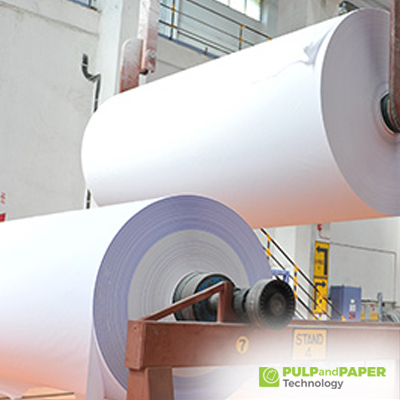Unraveling Innovations: Special Paper and Pulp in the Pulp and Paper Industry

In today's rapidly evolving industrial landscape, the pulp and paper industry stands at the forefront of innovation, especially concerning special paper and pulp products. These innovations not only drive efficiency and sustainability but also open new avenues for creative applications across various sectors. This article delves into the latest advancements in special paper and pulp, exploring their impact, benefits, and future trends.
1. The Evolution of Special Paper and Pulp
Special paper and pulp have come a long way from traditional production methods to highly advanced manufacturing processes. The evolution includes technological breakthroughs, such as improved pulp extraction techniques, specialized papermaking machinery, and eco-friendly processing methods. These advancements have revolutionized the quality, versatility, and sustainability of special paper and pulp products.
2. Key Innovations Driving the Industry Forward
a. Nanotechnology in Paper Production: The integration of nanotechnology has enhanced the strength, durability, and functionality of special paper and pulp. Nanocellulose, for instance, reinforces paper fibers, making them more resilient and suitable for demanding applications.
b. Bio-based Additives: Manufacturers are increasingly using bio-based additives derived from renewable sources to enhance the properties of special paper and pulp. These additives improve printability, moisture resistance, and biodegradability, aligning with sustainability goals.
c. Advanced Coating Techniques: Innovations in coating technologies have led to specialized papers with superior surface finishes, print quality, and resistance to chemicals and moisture. These advancements cater to specific industries like packaging, labeling, and specialty printing.
3. Benefits of Special Paper and Pulp Innovations
a. Enhanced Product Performance: The innovations in special paper and pulp result in products with enhanced strength, durability, and functional properties. This translates to improved performance in various applications, from packaging to industrial use.
b. Environmental Sustainability: The shift towards eco-friendly production processes and materials reduces the environmental footprint of special paper and pulp. Bio-based additives, recycling initiatives, and responsible sourcing contribute to a more sustainable industry.
c. Versatility and Customization: Advancements allow for greater versatility and customization of special paper and pulp products. Manufacturers can tailor properties such as thickness, texture, and coatings to meet specific customer requirements across diverse sectors.
4. Future Trends and Emerging Technologies
a. Digital Integration: The integration of digital technologies, such as Internet of Things (IoT) sensors and data analytics, is poised to transform the pulp and paper industry. Real-time monitoring, predictive maintenance, and optimized production processes will drive efficiency and cost savings.
b. Circular Economy Initiatives: Embracing circular economy principles, including closed-loop recycling and waste minimization, will be a key focus for the industry. Collaborative efforts with stakeholders to create sustainable supply chains and product lifecycles are expected to gain momentum.
c. Advanced Materials Development: Research and development in advanced materials, such as biodegradable polymers and functional additives, will lead to novel applications and improved sustainability credentials for special paper and pulp products.
5. Technological Advancements in Special Paper and Pulp
a. Digitalization and Automation: The integration of digitalization and automation has revolutionized pulp and paper manufacturing processes. From automated pulp extraction and papermaking to real-time quality control systems, these technologies enhance efficiency, reduce downtime, and ensure consistent product quality.
b. Robotics and AI: Robotics and artificial intelligence (AI) play a significant role in optimizing production workflows, predictive maintenance, and resource allocation. AI-driven algorithms analyze data from sensors and machines to optimize production parameters, minimize waste, and improve energy efficiency.
c. Smart Sensors and IoT: The use of smart sensors and Internet of Things (IoT) devices enables remote monitoring of equipment, predictive maintenance scheduling, and data-driven decision-making. Real-time data analytics provide insights into production performance, resource utilization, and environmental impacts.
6. Market Trends and Industry Dynamics
a. Global Market Overview: An analysis of the global special paper and pulp market, including market size, growth trends, regional dynamics, key players, and competitive landscape. Factors influencing market growth, such as technological advancements, demand from end-user industries, and regulatory frameworks, are explored.
b. Demand Drivers: The factors driving demand for special paper and pulp products, including growth in e-commerce packaging, increasing emphasis on sustainable packaging solutions, growth in the healthcare and pharmaceutical sectors, and advancements in specialty printing technologies.
c. Challenges and Opportunities: An assessment of challenges faced by the industry, such as raw material availability, fluctuating prices, regulatory compliance, and competition from alternative materials. Opportunities for market expansion, product innovation, and strategic collaborations are also highlighted.
7. Sustainability Initiatives and Environmental Impact
a. Green Manufacturing Practices: The adoption of green manufacturing practices, including energy-efficient processes, waste minimization, and water conservation measures. Sustainable sourcing of raw materials, recycling initiatives, and carbon footprint reduction strategies contribute to the industry's environmental stewardship.
b. Certifications and Standards: Overview of industry certifications and standards related to sustainable forestry practices, recycled content, eco-labeling, and emissions reduction. Compliance with regulatory requirements and voluntary sustainability initiatives enhances market competitiveness and environmental credibility.
c. Circular Economy Strategies: The transition towards a circular economy model, focusing on closed-loop recycling, resource recovery from waste streams, and extended producer responsibility. Collaborative efforts with stakeholders across the value chain promote circularity and waste reduction goals.
8. Applications across Industries
a. Packaging Innovations: Special paper and pulp play a crucial role in packaging innovations, including lightweight packaging solutions, barrier coatings for food packaging, anti-counterfeiting features, and eco-friendly alternatives to plastic packaging.
b. Printing and Graphics: Advancements in specialty printing papers, including high-resolution printing capabilities, digital printing compatibility, specialty finishes (e.g., embossing, foiling), and sustainable ink technologies.
c. Industrial and Technical Applications: Special paper and pulp products find applications in industrial sectors such as automotive (e.g., filtration, insulation), electronics (e.g., printed circuit boards), construction (e.g., insulation, moisture barriers), and healthcare (e.g., medical packaging, diagnostic strips).
9. Regulatory Landscape and Compliance
a. Environmental Regulations: An overview of key environmental regulations impacting the pulp and paper industry, including emissions standards, water quality regulations, waste management requirements, and sustainable forestry practices.
b. Product Standards and Safety: Compliance with product standards related to paper quality, safety, recyclability, and biodegradability. Regulatory frameworks for food contact materials, pharmaceutical packaging, and consumer safety are critical considerations for manufacturers.
c. Global Trade and Tariffs: Analysis of trade dynamics, tariffs, and trade agreements affecting the international trade of special paper and pulp products. Market access, import/export regulations, and trade barriers influence global supply chains and market competitiveness.
10. Future Outlook and Strategic Imperatives
a. Emerging Technologies: A glimpse into emerging technologies shaping the future of special paper and pulp, including 3D printing applications, bio-based polymers, smart packaging solutions, and advanced materials development.
b. Innovation Ecosystem: The role of innovation ecosystems, research partnerships, and industry collaborations in driving product innovation, market diversification, and sustainable growth. Cross-industry collaborations and knowledge sharing foster innovation and market resilience.
c. Strategic Imperatives: Key strategies for industry stakeholders to navigate market challenges and capitalize on growth opportunities. Focus areas include innovation investment, digital transformation, sustainability leadership, market diversification, and talent development.
Conclusion:
The journey through the realm of special paper and pulp in the pulp and paper industry unveils a tapestry woven with innovation, sustainability, market dynamics, and technological advancements. From the evolution of manufacturing processes to market trends, environmental stewardship, and future outlook, the industry stands at a pivotal juncture poised for transformative growth and resilience.
The technological advancements witnessed in recent years, encompassing digitalization, automation, robotics, AI, and IoT, have reshaped production landscapes, enhancing efficiency, quality control, and resource optimization. These innovations not only drive operational excellence but also pave the way for smarter, more sustainable manufacturing practices. Market dynamics reflect a growing demand for specialty paper and pulp products, fueled by trends such as e-commerce growth, sustainable packaging solutions, and advancements in specialty printing. The industry's response to these demands involves a strategic focus on customization, performance optimization, and eco-friendly materials and processes.
Sustainability emerges as a central theme, with the industry embracing green manufacturing practices, circular economy principles, and regulatory compliance. Certifications, standards, and collaborative initiatives underscore a collective commitment to environmental stewardship, resource conservation, and waste reduction. Applications across industries showcase the versatility and adaptability of special paper and pulp products, ranging from packaging innovations to industrial and technical applications. The industry's ability to cater to diverse market needs while driving innovation and sustainability underscores its resilience and relevance in a dynamic global landscape.
Looking ahead, the convergence of emerging technologies, innovation ecosystems, and strategic imperatives sets the stage for a future characterized by continued growth, resilience, and market leadership. The pursuit of sustainable growth, digital transformation, market diversification, and talent development will be pivotal in shaping the industry's trajectory.
In conclusion, the journey of special paper and pulp in the pulp and paper industry is not merely a narrative of innovation and advancement but a testament to resilience, sustainability, and forward-thinking strategies. As the industry navigates challenges and embraces opportunities, it remains steadfast in its commitment to driving positive change, delivering value to stakeholders, and shaping a more sustainable future for generations to come.









